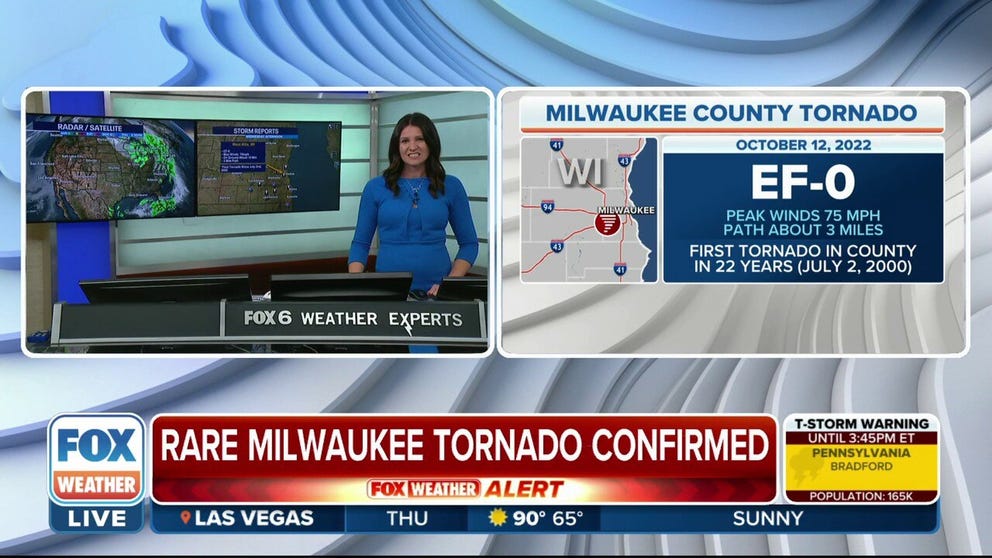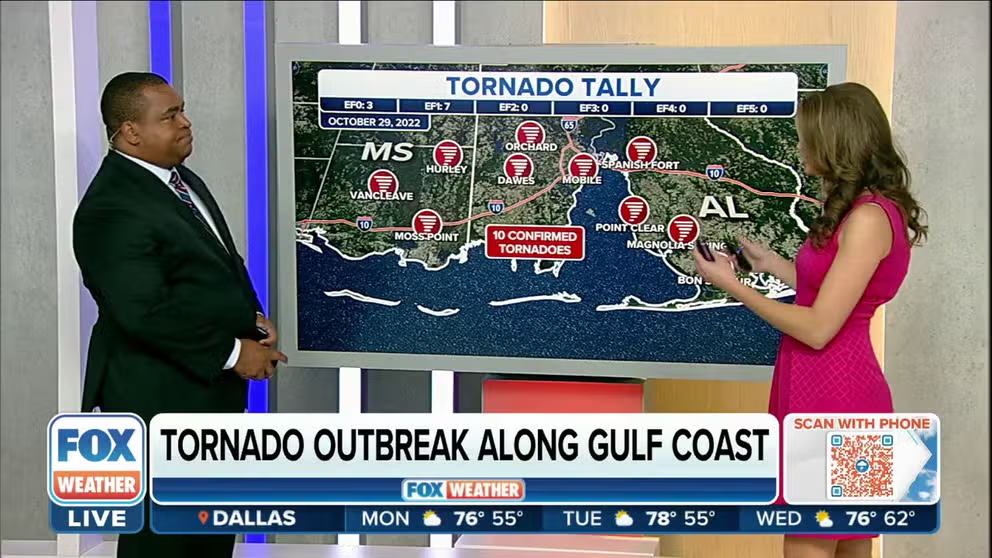October feels lull in severe weather as hurricane season fades
October is sandwiched between the waning peak of the hurricane season in September and the start of the "second severe weather" season in November and December as arctic air masses and Gulf warmth set the stage for rampant storminess.

Damage left behind after an EF-0 tornado touched down outside Milwaukee on Oct. 12, 2022
(National Weather Service, Milwaukee / NOAA)
Severe weather in October tends to be fleeting, and 2022 was no different.
The month is sandwiched between the waning peak of the hurricane season in September and the start of the "second severe weather" season in November and December as arctic air masses and Gulf warmth set the stage for rampant storminess
FALL IS THE SECOND SEVERE WEATHER SEASON
Just four days of October saw an above-average tally of severe weather reports. Compare that with another 12 days of the month that saw a grand total of zero severe weather reports.
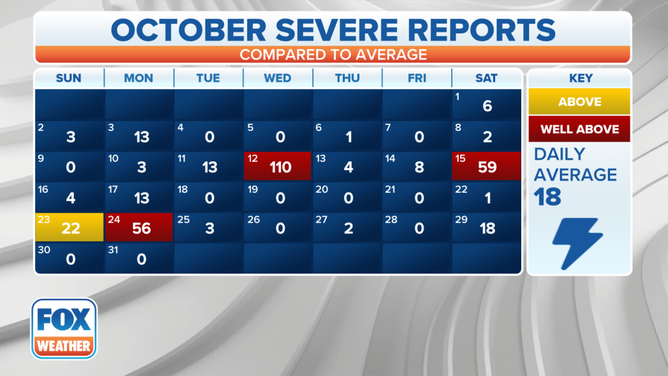
(FOX Weather)
This all made for an October that saw just 60% of its average severe activity, and all modes of severe weather ended October with below-average tallies.
FOX Weather Senior Data Specialist Shane Brown has compiled all the severe weather reports for the month and found of the few active days in October, three of the four saw their number of reports well above average (more than two times the norm). The busiest day was Oct. 12, headlined by 13 reports of tornadoes in the greater Milwaukee area and a total of 110 severe reports nationwide. That, believe it or not, makes for the most active severe weather day since Aug. 29.
Just a few dozen tornadoes in October
In total, there were 40 reports of tornadoes in October, of which 22 were confirmed and rated by local National Weather Service offices. The tally is below the long-term average for reports of about 64 for any October.
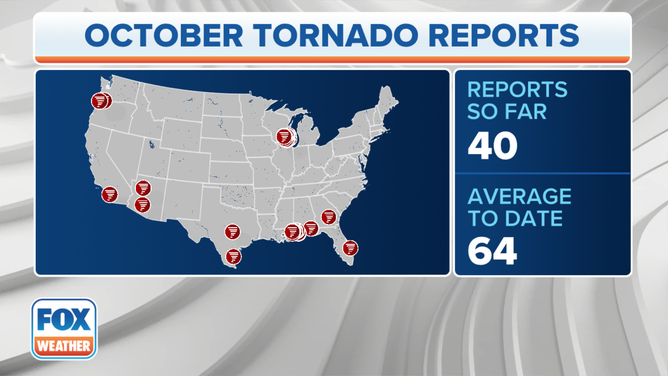
(FOX Weather)
Brown says nine states had at least one tornado report this past month, with Wisconsin leading the U.S. with 13. Close behind was Alabama, which saw nine, and Mississippi, which had six.
The remaining states (Oregon, California, Arizona, Texas, Georgia and Florida) saw fewer than five apiece. The most active tornado day was Oct. 29, when 15 reports were made along coastal Mississippi and Alabama.
First tornado in 22 years touched down in Milwaukee County on Wednesday
A confirmed tornado touched down in Milwaukee County on Wednesday during severe storms. This was the first tornado in Milwaukee County in 22 years.
Perhaps the more notable day was the 12th, which saw an outbreak of EF-0 tornadoes in the Milwaukee metro area. Wisconsin had seen just 26 October tornadoes since 1950, and 19 of those 26 occurred during the first two weeks of the month.
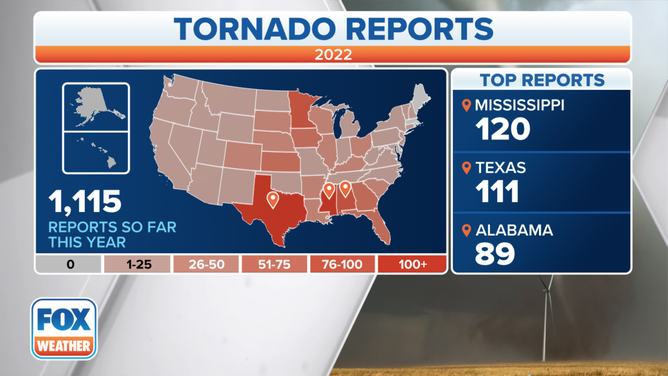
(FOX Weather)
The month's strongest tornado was an EF-2, which hit near Oberlin, Louisiana, on the 25th. Minor damage was reported with this storm to manufactured homes and small trees. An outbreak of 11 tornados spread across southern Alabama and Mississippi on Oct. 29.
NWS confirms 10 tornadoes occurred Saturday with regional outbreak in Mississippi, Alabama
Damage surveys completed so far from the NWS confirm 10 tornadoes did occur across Southern Mississippi and Alabama Saturday.
On the year, the nation's 1,115 tornado reports remain below the long-term average of 1,230 through October. Mississippi, Texas and Alabama remain the top three states in the U.S. for tornado activity this year. Minnesota now stands at No. 4, accumulating 77 reports over the past 10 months.
Wind reports fall below average too…
Wind report tallies also finished below the long-term average in October. Typically, we would expect to see close to 300 reports, but we finished with only 194 for the month.
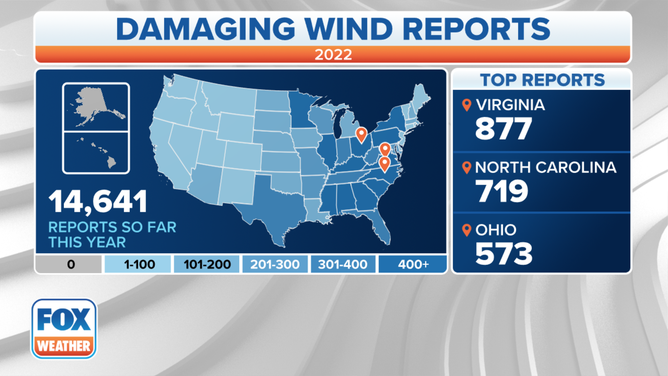
(FOX Weather)
Brown found that 26 states saw at least one report of damaging wind in October, with Texas leading the pack with 48. The strongest recorded gust of the month came from Plymouth, Nebraska, on Oct. 11 when numerous severe gusts reached 87 mph in the southeastern corner of the state.
SECRETS OF THE SPC: HOW DAILY CONVECTIVE OUTLOOK GRAPHICS ARE MADE
The U.S. is closing in on 15,000 reports of damaging wind this year – ending October with 14,641. Virginia, North Carolina and Ohio lead the U.S. in total wind reports with 877, 719 and 573, respectively.
Arkansas was king of the hail in October
Brown says hail came the closest of all modes of severe weather to be close to the long-term monthly average, as its 104 reports were just shy of the October average of 111.
Arkansas had the "honor" of experiencing the largest hailstone observed and the most hail reports of any state at 31.
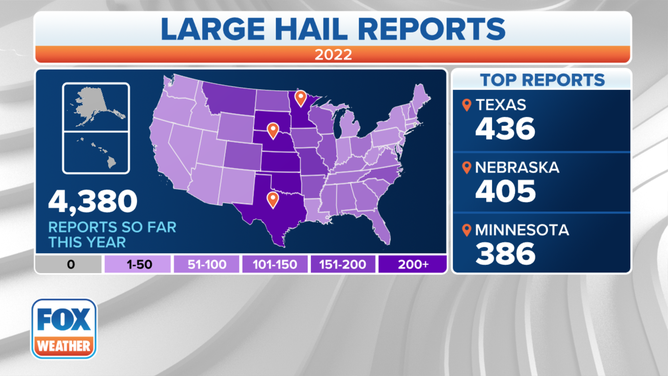
(FOX Weather)
As for the largest, the baseball-sized hailstone fell in the town of Olyphant, Arkansas, on Oct. 15 as severe storms produced widespread hail damage across the state.
On the year, however, the nation is still well below average for hail counts. So far, the U.S. has recorded 4,380 reports of large hail – well below the long-term average of over 5,000.
Texas, Nebraska and Minnesota lead the U.S. in total reports.
October flash flooding mainly in the West
October was also a below-average month for flash flooding. The nation saw just 55 reports, well below the long-term average of over 250.
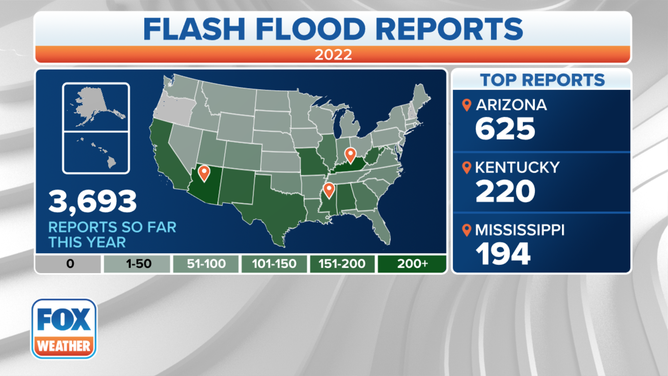
(FOX Weather)
Eight states saw at least one flash flood report in October, but of the 55 total, only eight were made east of the Mississippi River.
The bulk of reports came out of Arizona, which was 23. And no surprise, Arizona still leads the U.S. in total flash flood reports with a whopping 625 thanks to an active summer monsoon season.

(FOX Weather)
The U.S.'s 3,693 flash flood reports are still above the long-term average of 3,606 but are now on pace to end the year below average even after the wet and wild August and September.
